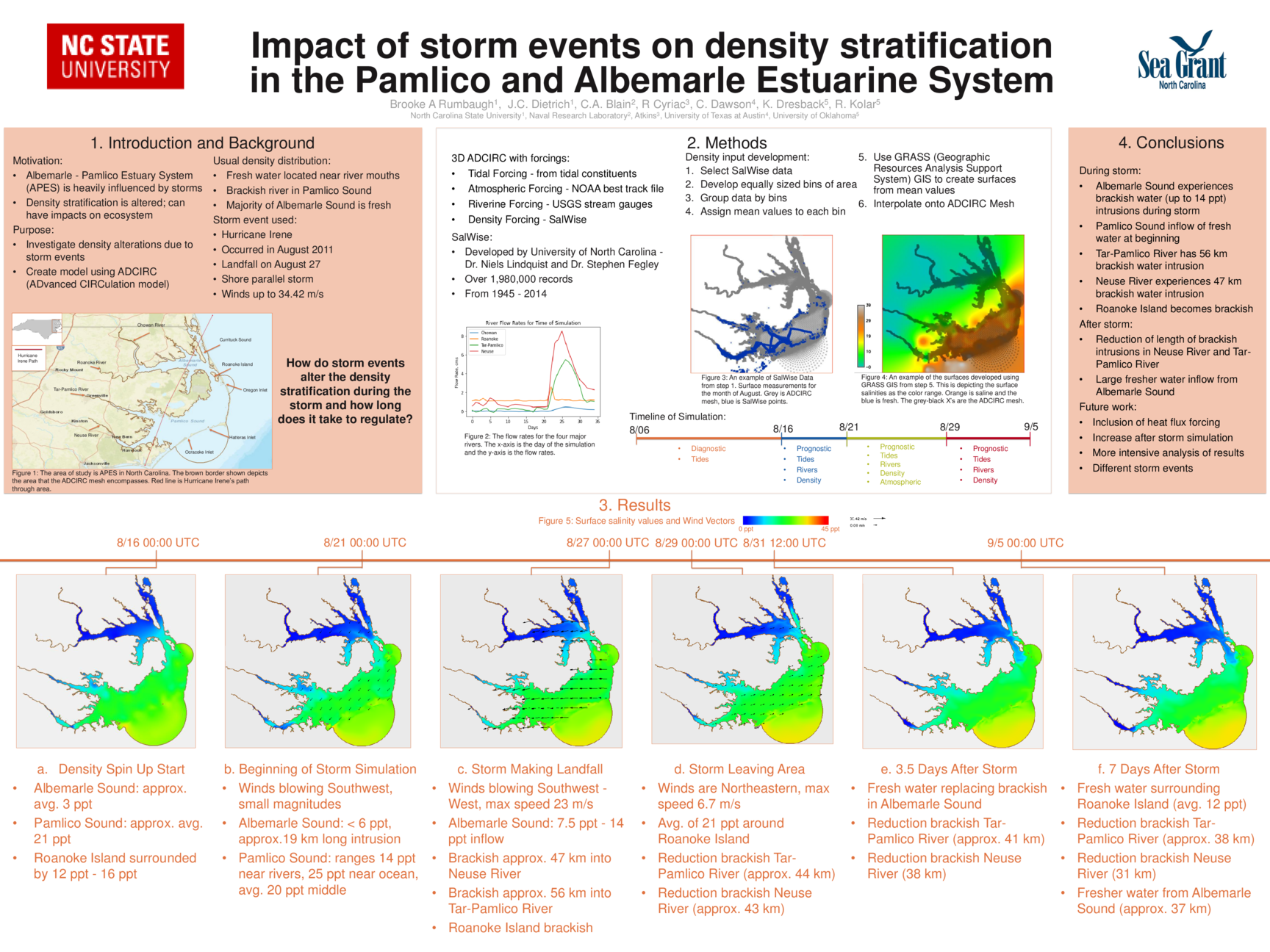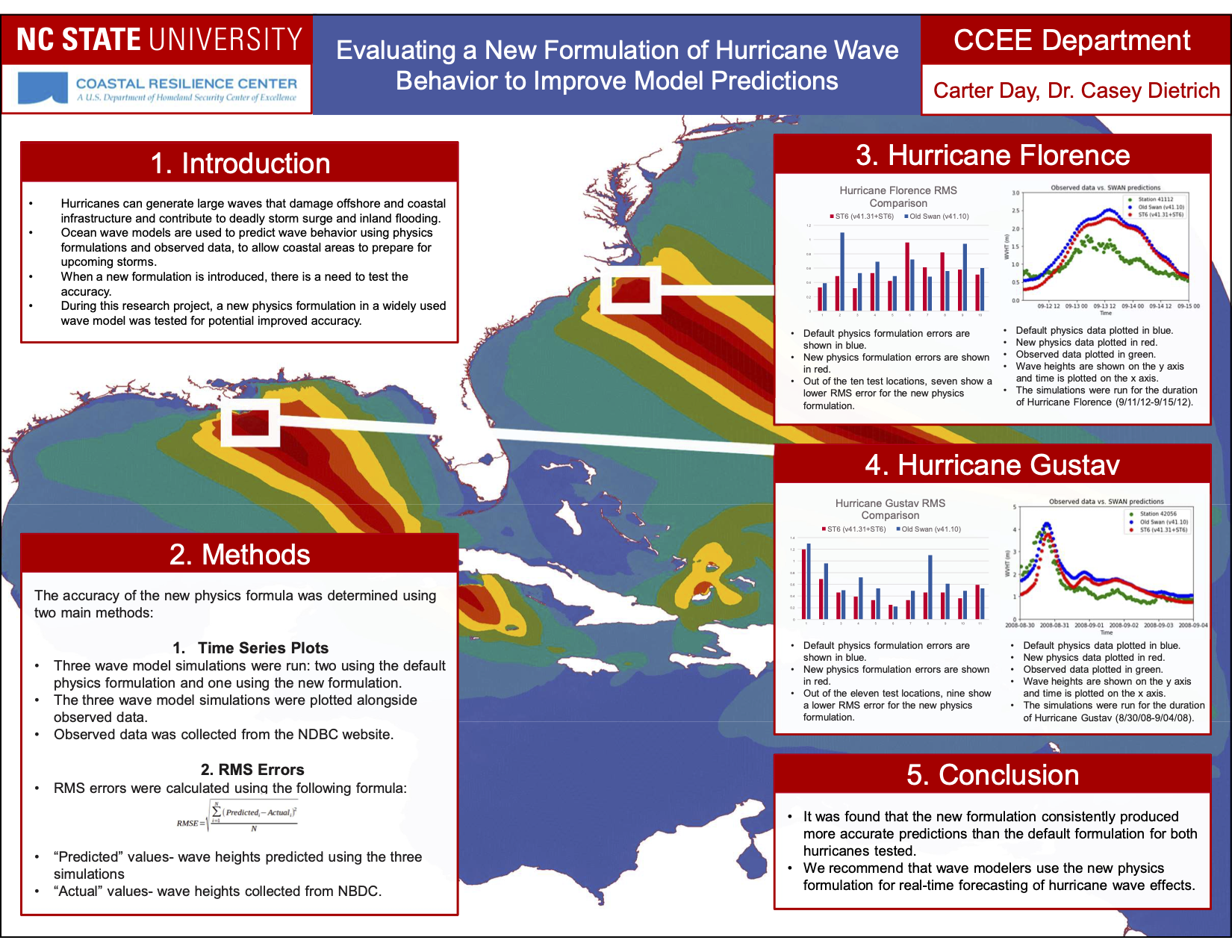News: Coastal Resilience and Sustainability Initiative
Catalyzing Coastal Change

Casey Dietrich, associate professor in the Department of Civil, Construction and Environmental Engineering, is also a member of CRSI’s leadership team. His expertise in the prediction of coastal hazards, will help the initiative further research on determining how coastal environments respond to storms. For example, a storm like the recent Hurricane Ida devastated New Orleans’ power grid, and there needs to be some sort of solution for how to solve power issues during and after storms.
“My research team develops computer models to represent how beaches and dunes will be eroded, and which areas will be flooded and for how long,” he said. “It is critical to understand how these hazards can vary, both across complex coasts like in North Carolina for now and in the future, as a step toward improving resiliency and sustainability for coastal regions.”
The interdisciplinary nature of the team’s work, however, cannot be overstated. Solutions to one coastal challenge, like a seawall to mitigate flooding, may create new challenges or unintended consequences to the environment, tourism, energy and water systems. The varied issues facing coastal areas necessitate connecting across disciplines to develop integrated solutions.
Fitts-Woolard Hall in Action
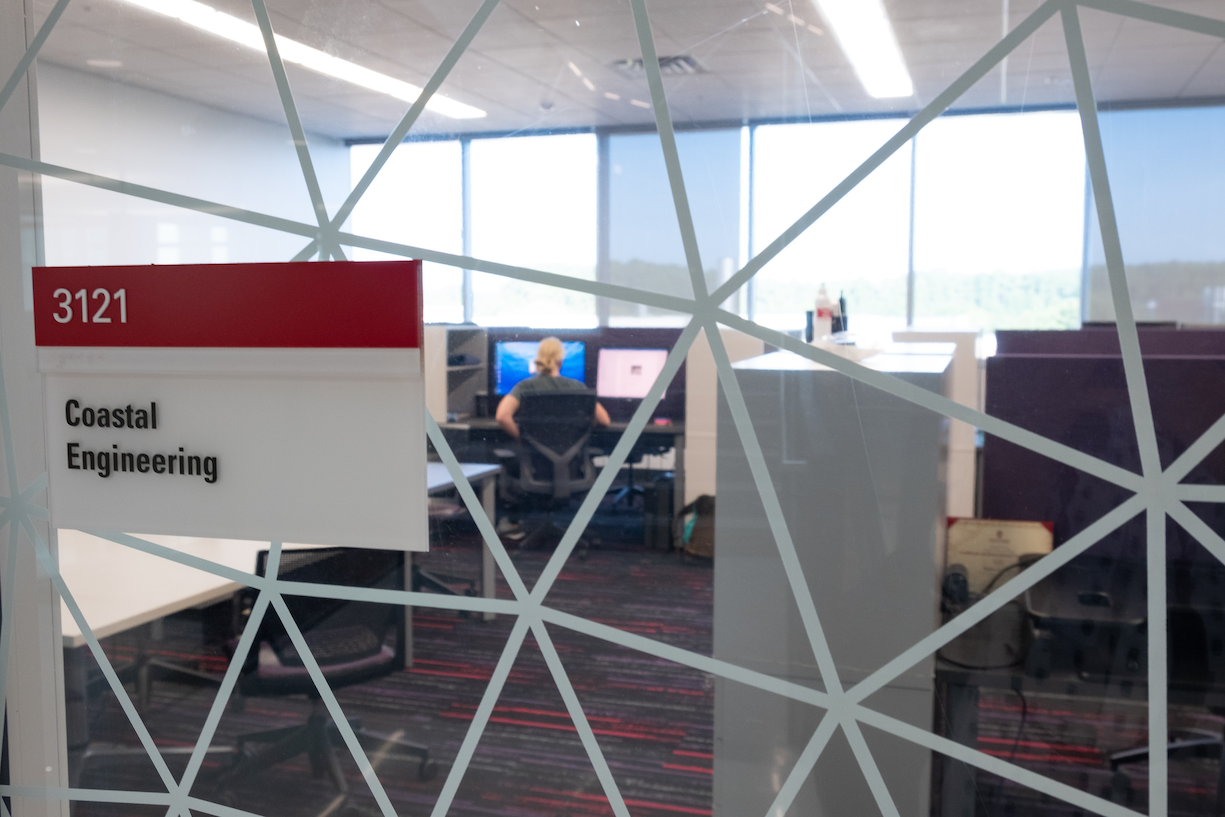
View into the Coastal Engineering Lab.

Jenero Knowles and Dylan Anderson discussing how to succeed in academic research.
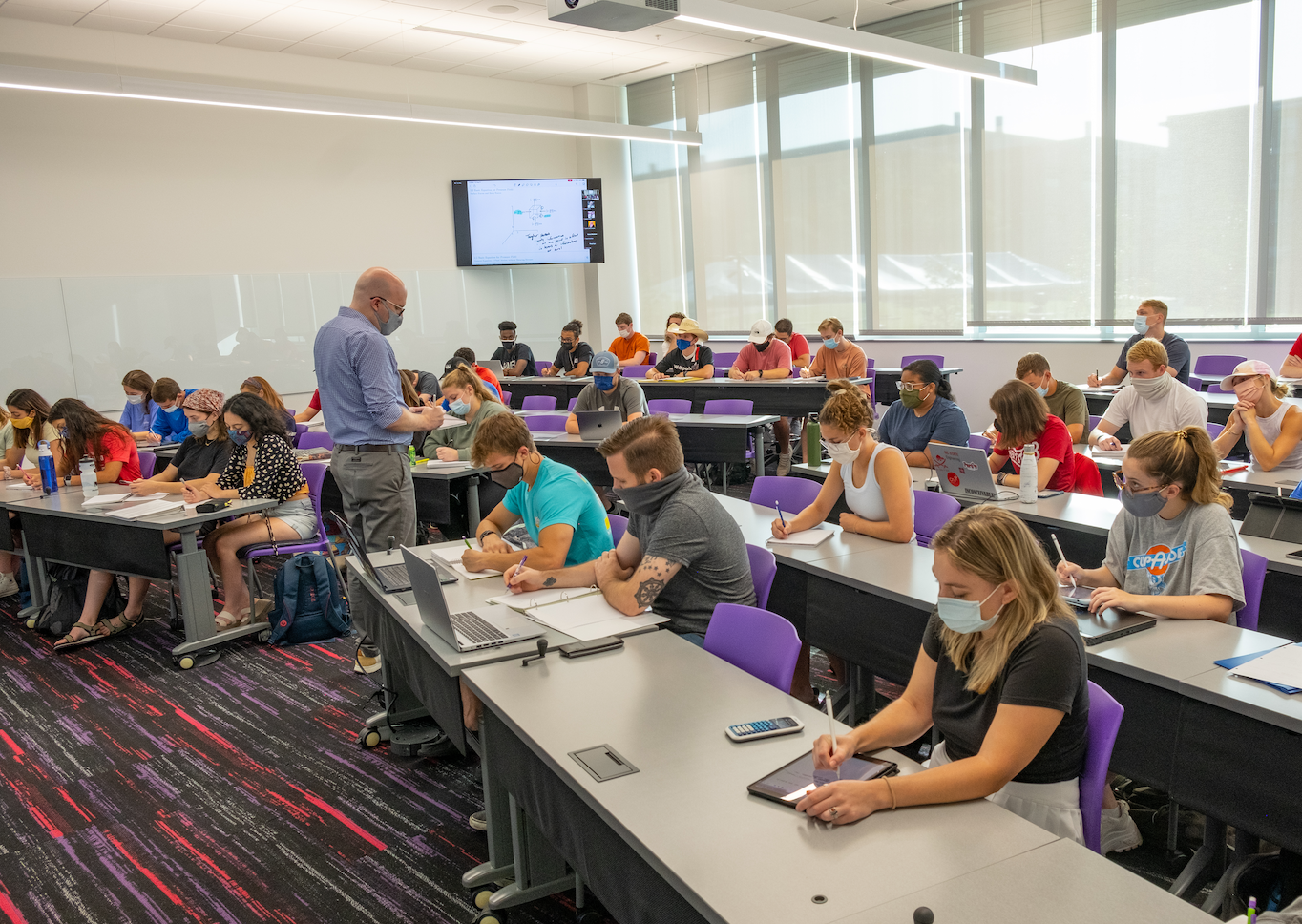
Casey Dietrich teaching about the hydrostatic pressure distribution in CE 282.
Coupling of Deterministic and Probabilistic Models for Prediction of Storm-Driven Erosion on Barrier Islands
 In this dissertation, first a morphodynamic model is used to explore the effects of Isabel (2003) on the NC Outer Banks, with the focus on a large domain that covers 30 km of the barrier island from Rodanthe to Avon. It is hypothesized that the model can be coarsened and expanded to a large domain while preserving accuracy. Model predictions for dune erosion and overwash are in good agreement with post-storm observations. Sensitivity studies show that the model accuracy is less sensitive to the alongshore resolution of the mesh. Then, the topographic elevation changes are upscaled to a region-scale flooding model to allow overwash and inundation behind the dunes. The loose coupling of these process-based models improves the flooding predictions in region-scale model significantly.
In this dissertation, first a morphodynamic model is used to explore the effects of Isabel (2003) on the NC Outer Banks, with the focus on a large domain that covers 30 km of the barrier island from Rodanthe to Avon. It is hypothesized that the model can be coarsened and expanded to a large domain while preserving accuracy. Model predictions for dune erosion and overwash are in good agreement with post-storm observations. Sensitivity studies show that the model accuracy is less sensitive to the alongshore resolution of the mesh. Then, the topographic elevation changes are upscaled to a region-scale flooding model to allow overwash and inundation behind the dunes. The loose coupling of these process-based models improves the flooding predictions in region-scale model significantly.
 Then, a more complex case of beaching and its impacts on larger-scale circulations are explored. Isabel (2003) breached the barrier island near the town of Hatteras and formed three channels connecting the ocean to the sound. Two-way coupling of high-resolution numerical models for coastal erosion and flooding is implemented to study the temporal and spatial evolution of the breach and its contribution to the hydrodynamics in the sound. It is hypothesized that the channels were formed due to the combined effects of ocean-side dune erosion and lagoon-side elevated water levels. The model shows that the flow from the sound to the ocean has an important role in deepening the breached channels. The morphodynamic model can predict the initiation and approximate location of the breach. However, it failed to accurately capture the channels’ depths. Several flooding scenarios are considered to implement the ground surface changes in the flooding model. The evolving breach can affect the timing and extent of flow into the lagoon. The model results show that the breach has region-scale effects on flooding that extend about 10 km into the lagoon.
Then, a more complex case of beaching and its impacts on larger-scale circulations are explored. Isabel (2003) breached the barrier island near the town of Hatteras and formed three channels connecting the ocean to the sound. Two-way coupling of high-resolution numerical models for coastal erosion and flooding is implemented to study the temporal and spatial evolution of the breach and its contribution to the hydrodynamics in the sound. It is hypothesized that the channels were formed due to the combined effects of ocean-side dune erosion and lagoon-side elevated water levels. The model shows that the flow from the sound to the ocean has an important role in deepening the breached channels. The morphodynamic model can predict the initiation and approximate location of the breach. However, it failed to accurately capture the channels’ depths. Several flooding scenarios are considered to implement the ground surface changes in the flooding model. The evolving breach can affect the timing and extent of flow into the lagoon. The model results show that the breach has region-scale effects on flooding that extend about 10 km into the lagoon.
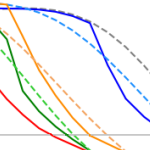 Finally, the erosion of nourished beaches subjected to multiple storms is investigated. Beach nourishment provides a buffer during extreme events in the short-termbut has a finite lifespan as the beach responds to subsequent storms. Numerical models are widely used to predict the beach morphodynamics, however, they are computationally expensive. In this research, a surrogate model is developed by coupling deterministic and probabilistic models to improve the computational efficiency and to include the randomness of possible future scenarios. A large data set of storm data and beach profiles is used to create a library of thousands of hypothetical scenarios to train the surrogate model. It is hypothesized that adding the beach profile variability in the analysis can improve the model in the sense that it can be applied to any beach state. The results show that predicted erosion volume by the surrogate model is very close to the numerical model predictions. The model produced the results in a few seconds which shows a significant improvement in computational time compared to numerical models.
Finally, the erosion of nourished beaches subjected to multiple storms is investigated. Beach nourishment provides a buffer during extreme events in the short-termbut has a finite lifespan as the beach responds to subsequent storms. Numerical models are widely used to predict the beach morphodynamics, however, they are computationally expensive. In this research, a surrogate model is developed by coupling deterministic and probabilistic models to improve the computational efficiency and to include the randomness of possible future scenarios. A large data set of storm data and beach profiles is used to create a library of thousands of hypothetical scenarios to train the surrogate model. It is hypothesized that adding the beach profile variability in the analysis can improve the model in the sense that it can be applied to any beach state. The results show that predicted erosion volume by the surrogate model is very close to the numerical model predictions. The model produced the results in a few seconds which shows a significant improvement in computational time compared to numerical models.
This research has the potential to improve the prediction of storm-driven erosion, overwash, inundation and breaching. The loose coupling of hydro- and morphodynamic models allows for better predictions of storm-driven flooding into previously protected areas, such as coastal communities and back-barrier regions. The use of observed beach profiles in the development of a surrogate model can improve its predictions of nourishment response to single and successive storms. These better predictions can enable better planning and design for mitigation of future hazards.
Jenero Knowles
Updated 2021/08/03
 |
Ph.D. Candidate (Graduate Research Assistant) Department of Civil, Construction and Environmental Engineering North Carolina State University Fitts-Woolard Hall, Room 3121 915 Partners Way Raleigh, NC 27606 jsknowle@ncsu.edu |
Hey there! I am a first year Ph.D. candidate in the Coastal and Computational Hydraulics Team (CCHT) at NC State University. I was born and raised in The Bahamas, which is an archipelago of islands just southeast of Florida and north of the Greater Antilles in the Caribbean, a region prone to hurricanes. As I grew older, my curiosity cultivated as tropical storms produced severe flooding on the islands while structures such as seawalls and jetties were in place to protect the shorelines. This led to my undergraduate degree in civil engineering where I took courses in water resources and learned more about wave variations and their effects on its surrounding environments. Combining my interest of coastal waves and a desire to mitigate flooding from storms, I knew that delving into research would help me to discover solutions to some coastal engineering issues.
I will be working on a project, “A Comparative Assessment of Total Water Levels for coastal military facility readiness and resilience using numerical models ,” where I will use ADCIRC to investigate all the relevant physics that contribute to total water levels. The model produced from ADCIRC will be compared with other models prepared by a group of researchers from different institutions. As I continue to expand my knowledge, I look forward using and learning different modeling software used in the industry.
Improving Coastal Flooding Predictions by Switching Meshes during a Simulation
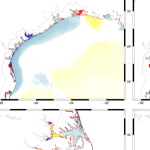 Storm surge and coastal flooding predictions can require high resolution of critical flow pathways and barriers, typically with simulations using grids/meshes with millions of cells/elements to represent a coastal region. However, the cost of this resolution can slow forecasts during a storm. To add resolution when and where it is needed, previous studies have used adaptive mesh methods, which update resolution at single or multiple cells but which require hierarchies of and thresholds for refinement, and nesting methods, which update resolution at subdomains but which require additional simulations. This research proposes a middle way, in which predictions from a coarse mesh are mapped, mid-simulation, onto a fine mesh with increased resolution near the storm’s projected landfall location. The coarse and fine meshes are pre-developed, thus removing any refinement decisions during the simulation, the solution mapping uses a widely used framework, thus enabling an efficient interpolation, and the same simulation is continued, thus eliminating a separate full-domain simulation. For four historical storms, results show efficiency gains of up to 53 percent, with minimal accuracy losses relative to a static simulation.
Storm surge and coastal flooding predictions can require high resolution of critical flow pathways and barriers, typically with simulations using grids/meshes with millions of cells/elements to represent a coastal region. However, the cost of this resolution can slow forecasts during a storm. To add resolution when and where it is needed, previous studies have used adaptive mesh methods, which update resolution at single or multiple cells but which require hierarchies of and thresholds for refinement, and nesting methods, which update resolution at subdomains but which require additional simulations. This research proposes a middle way, in which predictions from a coarse mesh are mapped, mid-simulation, onto a fine mesh with increased resolution near the storm’s projected landfall location. The coarse and fine meshes are pre-developed, thus removing any refinement decisions during the simulation, the solution mapping uses a widely used framework, thus enabling an efficient interpolation, and the same simulation is continued, thus eliminating a separate full-domain simulation. For four historical storms, results show efficiency gains of up to 53 percent, with minimal accuracy losses relative to a static simulation.
Posters: Undergraduate Research Symposium 2021
S Crisanti, JC Dietrich. “Scalability of Widely Used Coastal Flooding Model.” Undergraduate Research Symposium, North Carolina State University, 29 July 2021.
Alireza Gharagozlou defends PhD Dissertation

Alireza starts his oral defense presentation.


